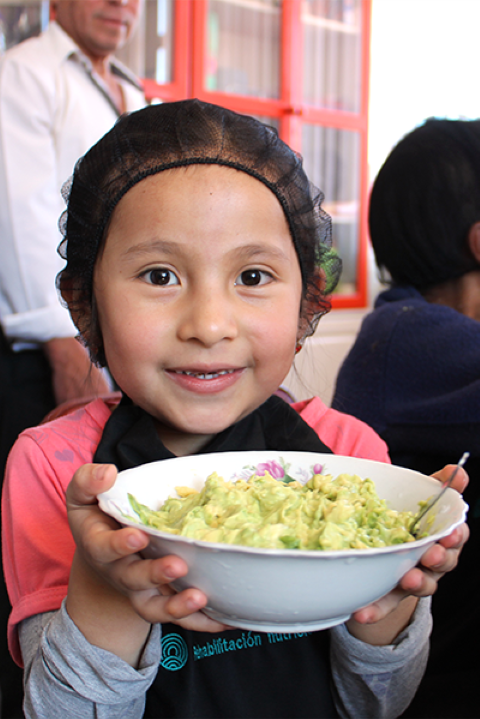Global poverty and hunger at a glance
- Around 45% of deaths among children under 5 years of age are linked to undernutrition.
- Approximately 45 million young children across the globe suffer from severe malnutrition each year – that’s nearly one out of every three children under 5 years of age.
- The World Food Program estimates that 345 million people will be food insecure in 2023 – more than twice as many as in 2020.
- Nearly 10% of the world’s population is affected by hunger.
- More than 60% of the world’s hungry population are women and girls.

Hunger and malnutrition. Not the same thing.
Worldwide, malnutrition contributes to almost half of the deaths in children under 5, claiming the lives of over 3 million children per year. A child facing poverty may not be hungry, but she may be malnourished and not getting the vitamins and minerals she needs to thrive. Without enough food or the right nutrition, children face a variety of setbacks that can derail their path out of poverty. Here are a few malnutrition-related roadblocks:
- Illness: Children with nutrition issues have weak immune systems, making them more likely to get sick. Malnutrition is the largest single contributor to disease in the world.
- Brain starved: A brain starved of minerals and vital nutrients is one that can’t concentrate, setting hungry children up for failure in school.
- Obesity: It may seem counterintuitive, but obesity is malnourishment, because the term describes all forms of poor nutrition. Even when food is relatively prevalent, it can be nutrient-poor — particularly lower-cost foods. Children can get too much food but too little of the vitamins and minerals they need, leaving them with the same challenges as undernourished children plus a whole new slate of health issues specific to obesity.

Terms to Know: Hidden Hunger Even when consuming an adequate amount of food, children may not be getting the vitamins, minerals and nutrition they need to stay healthy. Malnutrition is a complex problem to understand that isn’t caused or solved by one variable.
Here are some of the ways we help:
- Nutritional support provides underweight children immediate nutritional support to increase their weight, along with medical checkups to monitor their growth.
- Nutrition workshops and cooking classes are provided for caregivers of children with malnutrition issues.
- Education programs and interactive activities on nutrition and hygiene target kids who are at risk of being underweight and their caregivers.
- Healthy food education and promotion of physical activity in countries that face the double burden of overweight/obesity and undernutrition.


Here are some examples of how our programs impact the issue:
- Education: If you’re like many people, you find it hard to know what food choices are healthiest for you. Now, imagine living in a world where your choices and resources are dramatically limited. We work to ensure that parents understand the basics of nutrition for their circumstances by providing training on meal preparation using ingredients that are inexpensive and locally available.
- Health: When you support Children International, you support the overall health of children. When necessary, sponsored children receive health and malnutrition screenings.
- Localization: Our programs are tailored to the communities they serve, so different approaches work best in different places, like feeding programs at community schools, gardens at community centers or innovative ways to grow food in some of the crowded urban areas we serve.
- Breaking the cycle: We’re out to develop children into successful, educated adults who no longer experience hunger-related issues.



